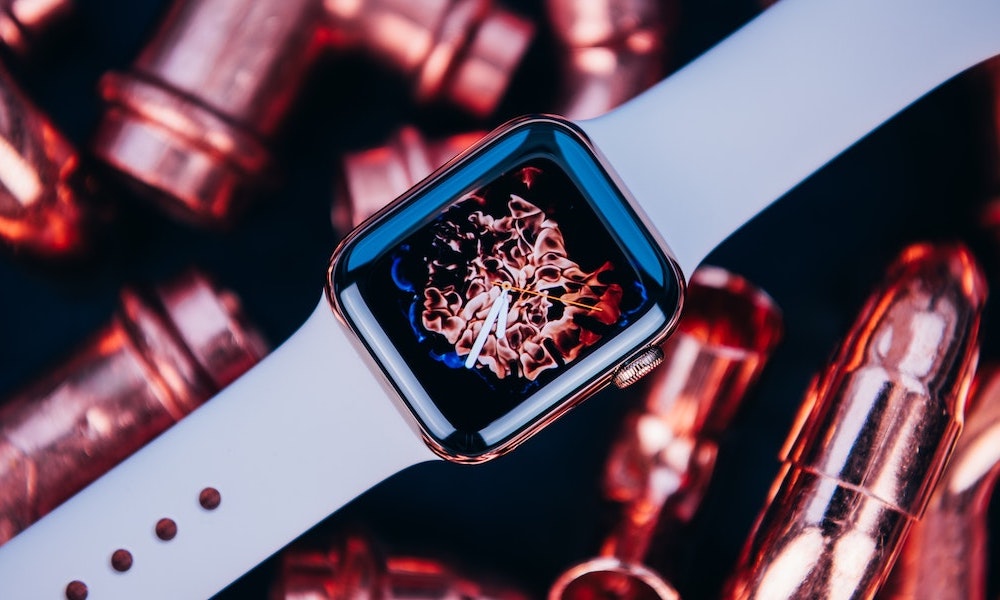The Apple Watch May Soon Offer This ‘Holy Grail’ of Health Monitoring
 Credit: Jonas Elia / Unsplash
Credit: Jonas Elia / Unsplash
Toggle Dark Mode
There’s little doubt that the Apple Watch has already made people’s lives a lot better in many ways — from improving health and fitness in general to actually saving lives with its advanced health sensors. However, there’s at least one specific new health sensing capability that Apple has been hard at work on that could improve the lives of hundreds of millions of people around the world in a completely unprecedented way.
For 34.2 million people in the U.S. alone, taking regular blood glucose measurements to manage diabetes has become a way of life. Sadly, however, this currently requires the inconvenient and uncomfortable process of drawing blood and then inserting it into an electronic measuring device — sometimes several times each day.
Medical researchers have been working to come up with a non-invasive solution for blood glucose monitoring since 1975, and yet despite spending hundreds of millions of dollars, no solution has been found that’s been accurate enough to produce a clinically or commercially viable product.
So, it’s not surprising that this is one nut that Apple seems determined to crack. Tim Cook has repeatedly said that he wants healthcare to be one of Apple’s more important legacies, and with the company’s deep pockets, it’s able to spend a massive amount of money in further these goals.
Earlier this year, a new patent revealed that Apple has been working on terahertz radiation sensors as one possible way of solving this problem. Terahertz spectroscopy and imaging would use extremely high-frequency electromagnetic waves to penetrate deep into the skin, allowing for the detection and measurement of a variety of conditions, including non-invasive blood glucose monitoring.
Now, we’re seeing new evidence of Apple’s work in this area, in the form of a partnership with a UK-based electronics startup.
A Not-So-Silent Partner
According to The Telegraph, a relatively small medical health-tech company based in the UK known as Rockley Photonics, just filed paperwork with the SEC as part of its preparations to go public in New York, revealing its long-standing relationship with Apple in the process.
In fact, it turns out that Apple has been Rockley’s largest customer for the past two years, and that this relationship is expected to continue as part of an ongoing “supply and development agreement” between the two companies.
In other words, the vast majority of Rockley’s income is coming directly from Apple. According to Rockley CEO Andrew Rickman, this is in the form of engineering fees being paid for work on future products, which are almost certainly connected to blood monitoring.
Rockley, which is based in Oxford, Wales, but also has offices in Silicon Valley, has developed ultra-accurate sensors for tracking blood glucose, blood pressure, and even blood alcohol levels. Rickman also added that he expects Rockley’s technology to find its way into at least one consumer product next year, although he was considerably more circumspect about admitting whether this would be an Apple Watch.
This isn’t surprising considering the non-disclosure agreements that almost certainly exist between Apple and all of its partners, however with Apple accounting for so much of Rockley’s revenue, it’s hard to imagine any other scenario.
Since Rockley’s technology has multiple applications, it’s also hard to know whether the first technology will actually involve blood glucose monitoring. Apple has also reportedly been working on adding blood pressure monitoring for some time, and there are rumours it almost made it into last year’s Apple Watch Series 6. However, that also suggests it’s much closer than Rickman’s 2022 estimate, with some reports suggesting it’s coming to the Apple Watch Series 7.
Ultimately, Apple’s biggest challenge when it comes to these kinds of health monitoring technologies, however, is providing the accuracy that’s needed to make them actually useful.
For example, the blood oxygen sensor added to the Apple Watch Series 6 last year was billed as a “wellness” feature — something that’s not really certified for medical use. In this case, however, that’s a fair distinction as blood oxygen levels are more useful for measuring fitness metrics, but critics have suggested it’s mostly useless for anything more meaningful.
By comparison, even a blood pressure monitor would need to be much more accurate, which is why Apple is believed to have scrapped its plans to bring it to the Series 6 last year. In the case of a blood glucose monitor, where incorrect readings could be fatal, the accuracy levels would have to be near perfect. Further, such a device is almost guaranteed to require certification and approval by government health bodies such as the FDA, which could also significantly delay Apple’s plans to bring the technology to its wearable.
All of that having been said, however, there’s little doubt that Apple is hard at work on the technology, and if there’s a way to do this properly, we’re confident that Apple will find it.
[The information provided in this article has NOT been confirmed by Apple and may be speculation. Provided details may not be factual. Take all rumors, tech or otherwise, with a grain of salt.]






